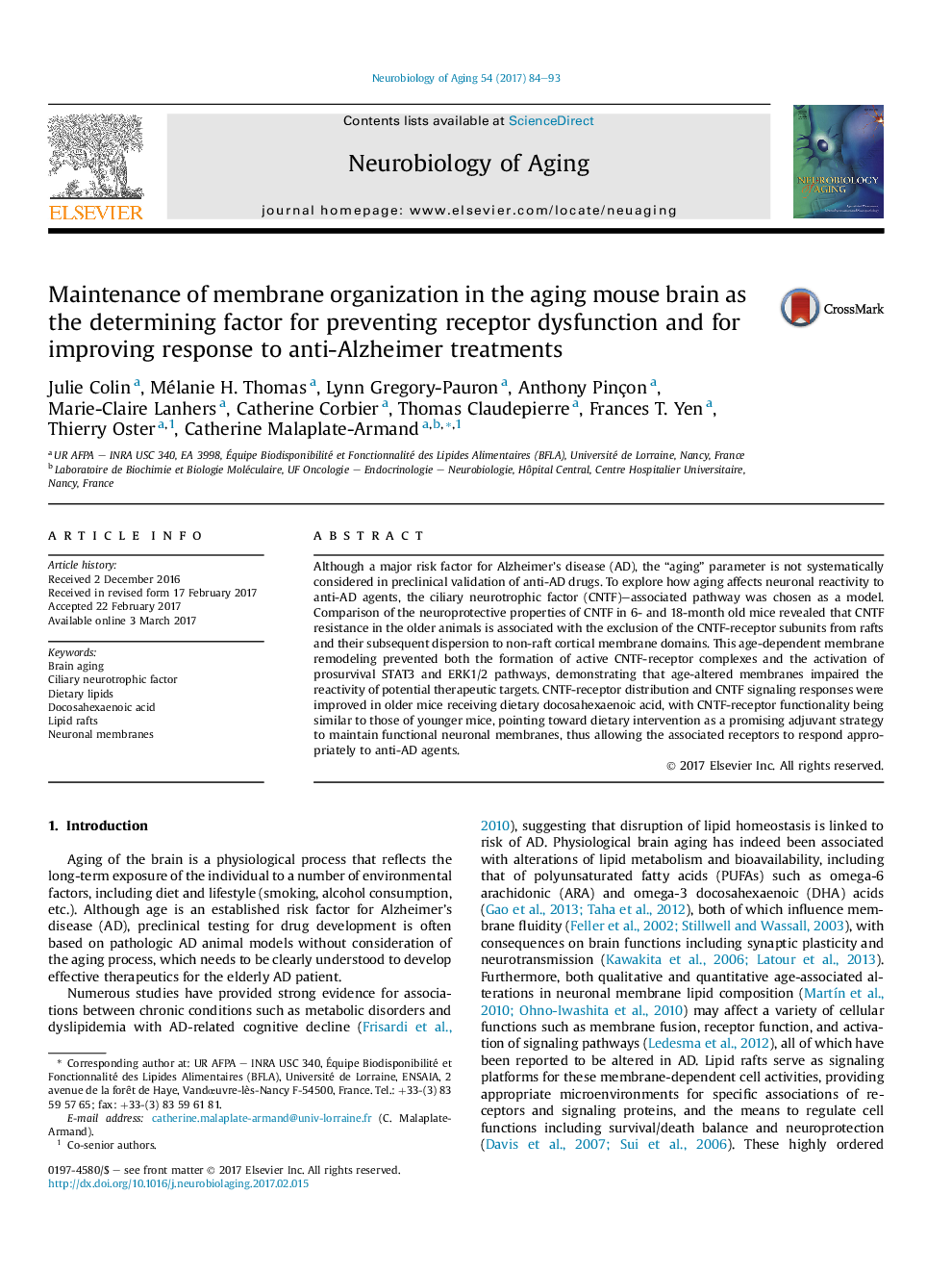| Article ID | Journal | Published Year | Pages | File Type |
|---|---|---|---|---|
| 4932551 | Neurobiology of Aging | 2017 | 10 Pages |
Abstract
Although a major risk factor for Alzheimer's disease (AD), the “aging” parameter is not systematically considered in preclinical validation of anti-AD drugs. To explore how aging affects neuronal reactivity to anti-AD agents, the ciliary neurotrophic factor (CNTF)-associated pathway was chosen as a model. Comparison of the neuroprotective properties of CNTF in 6- and 18-month old mice revealed that CNTF resistance in the older animals is associated with the exclusion of the CNTF-receptor subunits from rafts and their subsequent dispersion to non-raft cortical membrane domains. This age-dependent membrane remodeling prevented both the formation of active CNTF-receptor complexes and the activation of prosurvival STAT3 and ERK1/2 pathways, demonstrating that age-altered membranes impaired the reactivity of potential therapeutic targets. CNTF-receptor distribution and CNTF signaling responses were improved in older mice receiving dietary docosahexaenoic acid, with CNTF-receptor functionality being similar to those of younger mice, pointing toward dietary intervention as a promising adjuvant strategy to maintain functional neuronal membranes, thus allowing the associated receptors to respond appropriately to anti-AD agents.
Keywords
Related Topics
Life Sciences
Biochemistry, Genetics and Molecular Biology
Ageing
Authors
Julie Colin, Mélanie H. Thomas, Lynn Gregory-Pauron, Anthony Pinçon, Marie-Claire Lanhers, Catherine Corbier, Thomas Claudepierre, Frances T. Yen, Thierry Oster, Catherine Malaplate-Armand,
